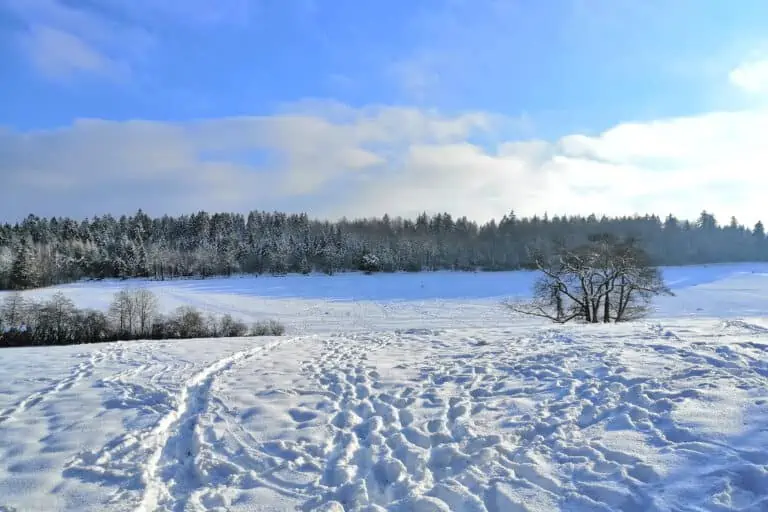The best time for a winter visit
When is winter in Switzerland?
Winter weather in Switzerland can occur from November to April.
Officially, the astronomical winter season in Switzerland is from December 21 to March 19. The meteorological winter season is from December 1 to February 28.
What’s the best month for a winter visit to Switzerland?
The best months to visit Switzerland in winter are January, February and early March. They offer the best chances of snow. Snow activities are available in many ski resorts.
Winter and snow in November
November officially isn’t winter yet. But snowfall can start in the mountains. Weather is often chilly and foggy. It’s low season and mountain transport can have maintenance breaks.
Still, this is a good time to visit Switzerland if you like peace and quiet. You can visit beautiful towns and museums. Train journeys are wonderful too. By late November, the first Christmas markets start.
Winter and snow in December
Early December is like November weather-wise. Wintry weather in Switzerland begins in late December. Snowfall may occur in the mountains and ski resorts start operating. You’ll find Christmas decorations and a cozy atmosphere in the towns and cities.
December is the best month to enjoy the holiday season in Switzerland. You can make city trips and shop at Christmas markets. Mountain top visits are possible too. If you stay in a town high in the Alps, you may experience the first snowfall.
December 24 to January 1 is the most expensive week of the year for accommodation. Find out how to save money here.
Winter and snow in January and February
January and February are the coldest months. They’re drier than summer. Snow can fall, especially at high altitudes.
You can best stay in the mountains. You’ll have the best chances of snow and of sunny, bright winter weather there.
You can enjoy lots of snow activities such as sledding and snowshoe hiking. Mountains and ski lifts can be crowded, especially during Swiss school holidays.
Winter and snow in March
March is still a good month for a winter holiday in Switzerland, if you choose a resort high in the mountains. If there’s enough snow, ski resorts at high altitude are still open. Most mountain transportation is operational.
The lower hills and valleys aren’t a good winter destination in March. Snow will start to melt and the landscape can look wet, brown and dull. In the lowlands, there’s not much chance of wintry weather.
Winter and snow in April
April is low season, except for Easter. Most ski resorts are closed and most mountain transportation shuts down. Hiking trails at high altitude will still be snow-covered, and special winter hiking trails will no longer be groomed. There’s still snow at higher mountain tops, but spring will set in in the lower areas.
April is not a good month for a winter visit, but you can still count on snowy views in the Alps. You’ll have to visit mountain tops to touch the snow.
Winter and snow in May to October
May to October is the summer season, and this is not suitable for a winter holiday in Switzerland. There can be snow, but on mountain tops only. Snow can fall at lower altitudes too, but it’s rare.
Where to find summer snow in Switzerland
Summer snow in Switzerland can usually be found at the highest mountain tops: about 3000 m (9843 ft) and higher. Examples are:
- Titlis (3032 m / 9948 ft)
- Jungfraujoch (3463 m / 11362 ft)
- Matterhorn Glacier Paradise (3883 m / 12740 ft)
Due to climate change, there may be little snow even at these altitudes during warm summers. That’s why winter is a much better time to enjoy snow in Switzerland. Find tips for snow activities in winter here.
Winter weather: temperatures, snow and sunshine
What is Swiss winter weather like?
Switzerland has a mild winter climate with large differences per region and altitude:
- It’s mild in the lowlands. Rain, fog and clouds are common. Snow doesn’t fall often. This goes for many larger towns such as Zurich, Geneva, Bern and Lucerne.
- In hills and valleys at medium altitude, there can be a mixture of mild weather and cold spells. Snow can occur.
- In the Alps, with towns such as St. Moritz and Zermatt, temperatures are lowest. It can freeze and chances of snow are best here.
The “Föhn” is a typically Swiss weather phenomenon. It’s a cross-alpine wind. This wind causes rain and moist on one side of the Alps, and mild dry air on the other side. If the Föhn occurs in winter, this can result in a significant local rise of temperature.
When does it snow in Switzerland?
Snow in Switzerland mostly falls in January, February and March. During these months, temperatures are lowest and the zero-degree limit drops.
Snowfall is not limited to that season. It’s common from October to April. But early or late snow will rarely be enough for a dense snow cover.
In the mountains, snowfall is possible during the rest of the year as well. The highest peaks are usually snow-covered all year, but because of global warming that’s no guarantee.
Where does it snow in Switzerland?
The snow area in Switzerland mainly consists of mountain tops and high valleys. Towns at an altitude of 1500 m (4921 ft) or higher have the best chances of snow.
In lower areas, there’s less chance of snow. For example: Lauterbrunnen is on the valley floor at 800 m (2625 ft). It may or may not snow there. Don’t expect a snow-covered landscape if you’re staying in low-altitude cities such as Zurich, Locarno, Basel, Geneva or Lucerne either.
Find tips for the best Swiss winter destinations here.
How cold does it get in Swiss winters?
The average overall winter temperature for Switzerland is -1.9 °C (28.6 F). This is the average of day and night temperatures, measured from 1990 to 2020. Temperatures vary per climate zone and altitude. With every 100 m (328 ft) of gaining height, the temperature drops 0.7 to 1.0 °C (1.8 F).
- In lowlands, at an altitude of 200-600 m (656-1969 ft), temperatures are often well above freezing point. This applies to many larger towns such as Zurich, Bern, Interlaken and Lucerne.
- In mountain resorts such as Mürren, temperatures around freezing point occur. During the coldest months it may freeze all day long.
- At the highest mountain tops it can freeze year-long, with temperatures around -10 °C (5 F).
| Location | Altitude in m | November, average day temperature | December, average day temperature | January, average day temperature | February, average day temperature | March, average day temperature | April, average day temperature |
|---|---|---|---|---|---|---|---|
| Lugano | 273 | 11.3 °C | 7.4 °C | 6.6 °C | 8.5 °C | 13.0 °C | 15.8 °C |
| Zurich (Kloten) | 426 | 7.6 °C | 4.1 °C | 3.2 °C | 5.2 °C | 10.3 °C | 14.6 °C |
| Lucerne | 454 | 7.8 °C | 4.3 °C | 3.4 °C | 5.2 °C | 10.3 °C | 14.4 °C |
| Interlaken | 577 | 7.7 °C | 3.8 °C | 3.1 °C | 5.1 °C | 10.1 °C | 14.1 °C |
| Engelberg | 1053 | 5.7 °C | 2.4 °C | 1.7 °C | 2.7 °C | 6.6 °C | 10.6 °C |
| Zermatt | 1683 | 4.8 °C | 1.3 °C | 0.7 °C | 1.5 °C | 4.9 °C | 8.7 °C |
| Samedan | 1708 | 3.7 °C | -1.2 °C | -1.6 °C | 0.5 °C | 3.7 °C | 7.4 °C |
| Arosa | 1878 | 2.6 °C | -0.1 °C | -0.8 °C | -0.8 °C | 1.3 °C | 4.1 °C |
| Jungfraujoch | 3571 | -6.9 °C | -8.9 °C | -9.7 °C | -10.5 °C | -9.4 °C | -7.0 °C |
How about rain and snow in Swiss winters?
How much rain and snow to expect?
There’s less precipitation in Swiss winters than in Swiss summers.
January, February and March are the driest months. It’s wetter just before and after winter: November, December and April. An example for Interlaken (577 m / 1893 ft):
- driest month: February, with an average of 70 mm
- wettest month: August, with an average of 144 mm
| Location | Altitude in m | November, precipitation in mm | December, precipitation in mm | January, precipitation in mm | February, precipitation in mm | March, precipitation in mm | April, precipitation in mm |
|---|---|---|---|---|---|---|---|
| Lugano | 273 | 127 | 80 | 66 | 52 | 80 | 156 |
| Zurich (Kloten) | 426 | 76 | 81 | 65 | 60 | 74 | 74 |
| Lucerne | 454 | 73 | 72 | 51 | 54 | 74 | 86 |
| Interlaken | 577 | 84 | 86 | 73 | 70 | 80 | 87 |
| Engelberg | 1053 | 108 | 103 | 89 | 89 | 103 | 113 |
| Zermatt | 1683 | 56 | 45 | 42 | 35 | 38 | 46 |
| Samedan | 1708 | 61 | 36 | 28 | 20 | 26 | 39 |
| Arosa | 1878 | 106 | 90 | 86 | 79 | 92 | 96 |
When does rain turn into snow?
The snow line is the altitude at which snow instead of rain falls. The average winter snow line in the Swiss Alps is at about 800 m. In practice, the snow line varies by location, time of the year and weather conditions.
This is the relation between snow line, temperature and altitude:
- Zero-degree limit: the altitude at which it is exactly 0 °C (32 F). Snowfall is possible from 200-400 m (656-1213 ft) below this altitude.
- Snowfall limit: the altitude from which snow instead of rain falls.
- Snow limit or snow line: the altitude at which snow remains at the bottom. The snow limit is usually 50-200 m (164-656 ft) higher than the snowfall limit.
For example: if the zero-degree limit is at 1000 m (3281 ft), snowfall occurs from 600-800 m (1969-2625 ft). It will rain below that altitude. The snow limit is at 650-1000 m (2133-3281 ft).
Is it sunny during winter in Switzerland?
There’s less sunshine in Swiss winters than in Swiss summers. November, December and January have the lowest number of sunshine hours. This is caused by short daylight and sometimes by cloudy weather.
Sunshine hours increase in February, March and April. Days are longer and the weather gets sunnier.
Clouds can sometimes hang at low altitude, covering the valleys. At the same time, higher areas can be cloudless and sunny. So even if it’s cloudy in your resort, it’s worth checking mountain webcams. For example:
- Interlaken in the valley (577 m / 1893 ft) has an average of 90 sunshine hours per month from November to April.
- Nearby Jungfraujoch in the mountains (3571 m / 11716 ft) has an average of 130 sunshine hours per month from November to April.
| Location | Altitude in m | November, sunshine hours | December, sunshine hours | January, sunshine hours | February, sunshine hours | March, sunshine hours | April, sunshine hours |
|---|---|---|---|---|---|---|---|
| Lugano | 273 | 110 | 108 | 125 | 138 | 186 | 171 |
| Zurich (Kloten) | 426 | 50 | 35 | 48 | 77 | 125 | 159 |
| Lucerne | 454 | 52 | 36 | 47 | 72 | 122 | 141 |
| Interlaken | 577 | 68 | 53 | 67 | 79 | 121 | 152 |
| Engelberg | 1053 | 61 | 31 | 51 | 91 | 122 | 133 |
| Zermatt | 1683 | 92 | 85 | 96 | 112 | 151 | 145 |
| Samedan | 1708 | 103 | 106 | 103 | 117 | 121 | 140 |
| Arosa | 1878 | 99 | 87 | 108 | 115 | 113 | 141 |
| Jungfraujoch | 3571 | 116 | 109 | 124 | 125 | 151 | 152 |
How does climate change affect Swiss winters?
Global warming is changing Switzerland’s winter weather. Cold winters (average of -4 °C / 24.8 F) are less common than before. Extremely warm winters occur more often.
Less snow falls in ski resorts at lower altitude. There’s no guarantee of snow here anymore, and this will get worse in the coming years.
The highest Swiss ski resorts will most probably remain snowy. The amount of snow might even increase there.
Current Swiss winter forecasts and snow conditions
What’s the Swiss winter and snow forecast?
Find Swiss weather forecasts, snow and sleet radars, and forecast interpretation tips here.
What are the current snow conditions in Switzerland?
Check these sources for current snow depth and snow maps:
- apps.apple.com and play.google.com: Swiss Snow app
- www.meteoswiss.admin.ch: the amount of snow at measuring stations in Switzerland
- www.slf.ch: snow depth at measuring stations throughout the country
- www.slf.ch: maps with snow conditions (only available in winter)
- swisswebcams.ch: webcams
How to prepare for Swiss winter weather
Your preparation starts at home:
- Study general winter conditions for your resort and region.
- Pack appropriate clothes or find out where to rent them.
- Arrange for Wifi and/or SIM-cards for your mobile phone. A well-functioning mobile device is important when you get out in the mountains.
- Pick a safe mode of transport: don’t drive unless absolutely necessary. Use public transport instead and consider a rail pass.
While in Switzerland:
- Check weather forecasts each morning before heading off. Dress accordingly.
- Adjust your plans if necessary.
How to handle dangerous winter weather
What to do in extreme winter weather?
Winter weather in Switzerland mostly isn’t dangerous. But casualties do occur. This is how to prepare if extreme weather is expected:
- Check hazard forecasts at www.meteoswiss.admin.ch.
- Follow the instructions of local authorities.
- Adjust your plans. Stay indoors.
- If you do go out, use appropriate gear. Make shorter trips and don’t stray far from civilization.
- Avoid forests in and after heavy snowfall: tree branches can fall down due to the weight of the snow.
- Make sure that someone who isn’t joining you knows where you’re going.
- Never leave marked ski slopes or winter hiking trails.
Towns in the Swiss Alps can occasionally get cut off from the outside world because of a snowstorm. In such cases, helicopters are available to reach the town for supplies and emergencies.
In rare cases, it gets get extremely cold during winter in Switzerland. Swiss buildings are designed to cope with this. You’ll be fine if you avoid outdoor activities.
Sleet can cause dangerous road circumstances. Don’t drive and postpone your journey. Walking on icy streets is tricky. Attaching anti-slip snow spikes under your shoes helps a lot.
How to deal with avalanches?
Avalanches can occur in the Swiss mountains. They’re mostly prevented by huge fences on slopes. They catch small amounts of snow, so it can’t pile up. Dangerous slopes are well monitored. Sometimes avalanches are triggered in a controlled way with explosives.
Check the avalanche risk at www.slf.ch.
If an avalanche comes down:
- Don’t try to outrun it, but try to move up above the fracture line or to the side of the avalanche.
- Hold on to something sturdy, such as a tree.
- If you get caught in the snow, try to ‘swim’ to the upper layer of snow.
- If you get buried, try to stick out one arm above the snow allowing others to find you. Dig a breathing pocket around your face. Try to stay calm.
More guides for your winter trip
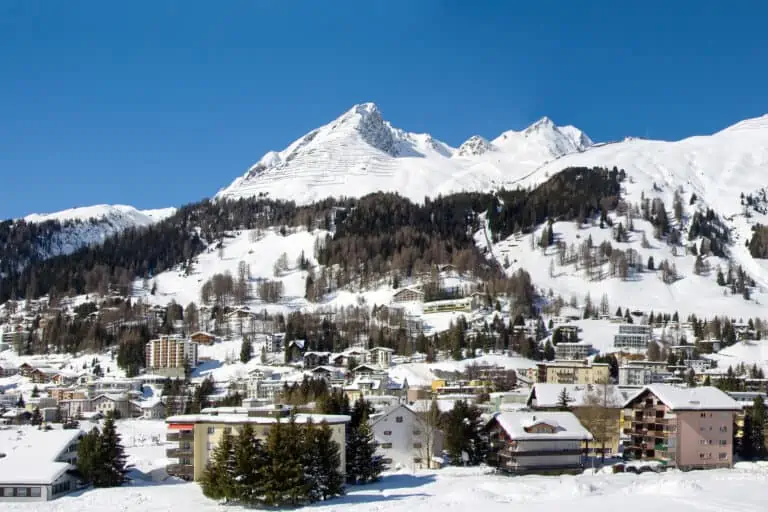
Winter towns
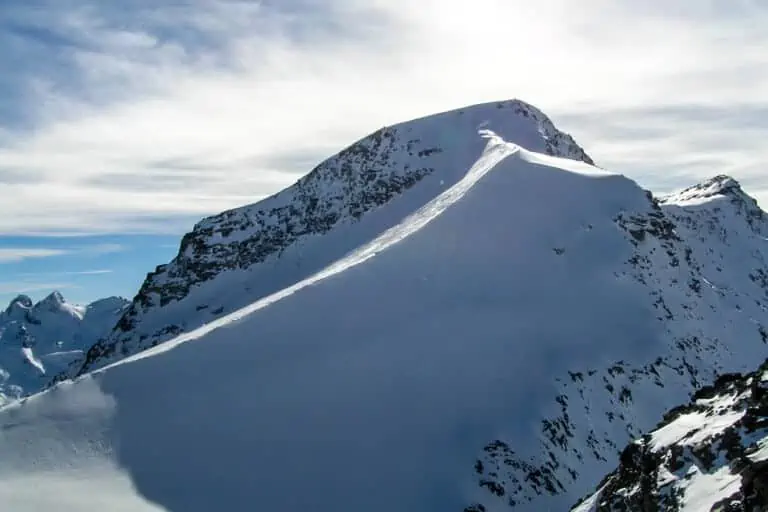
Winter activities
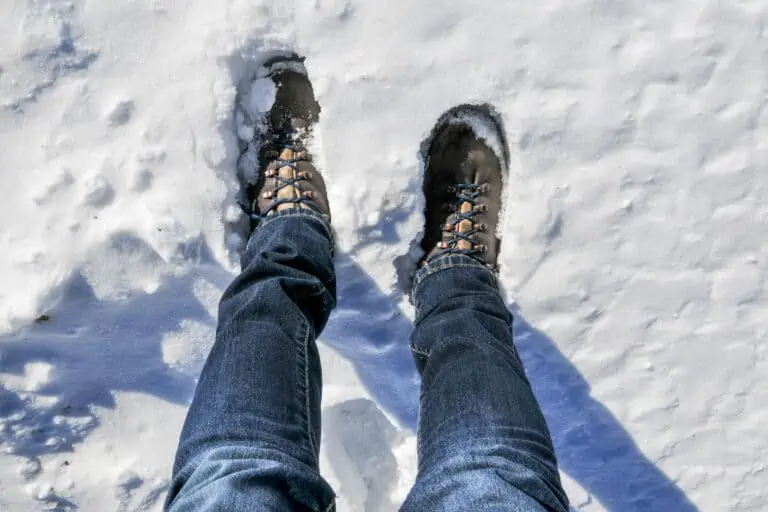
Clothing and gear
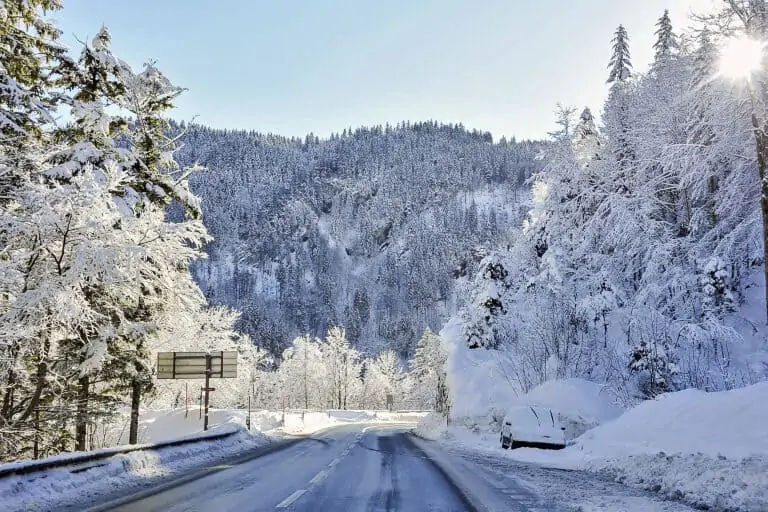
Driving in winter
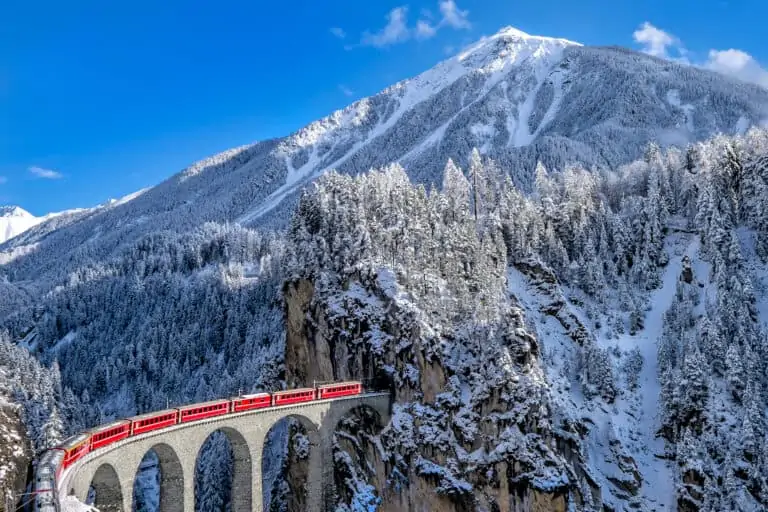
Winter itineraries
Other websites of interest
- www.meteoswiss.admin.ch: Swiss measurement values for temperature, wind, precipitation, sunshine and more
- www.meteoswiss.admin.ch: Swiss normal climate values
- www.meteoswiss.admin.ch: Swiss annual course series comparing current values against norm values
- www.meteoswiss.admin.ch: Swiss climate diagrams and norm values
- www.meteoschweiz.admin.ch: climate change in Switzerland
- www.wikihow.com: how to behave in an avalanche
